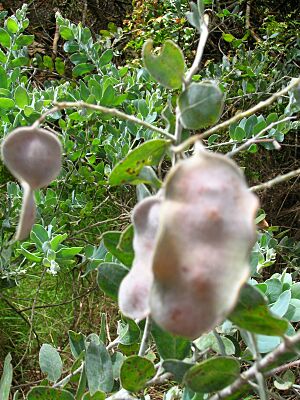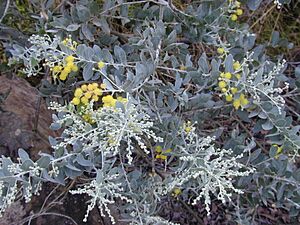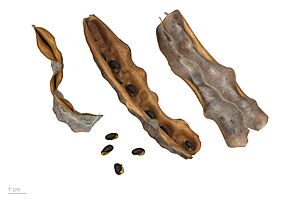Acacia podalyriifolia facts for kids
Quick facts for kids Acacia podalyriifolia |
|
|---|---|
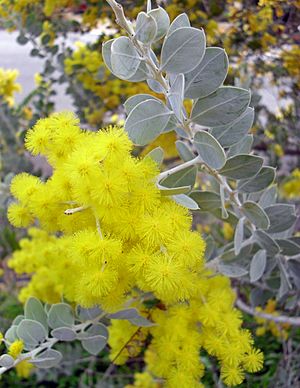 |
|
| Scientific classification | |
| Genus: |
Acacia
|
| Species: |
podalyriifolia
|
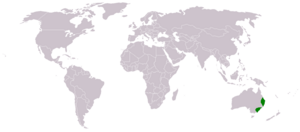 |
|
| Range of Acacia podalyriifolia | |
| Synonyms | |
|
|
Acacia podalyriifolia is a fast-growing tree. It is also known as the Mount Morgan wattle or Queensland silver wattle. This tree is native to Australia. However, it now grows naturally in other places too. You can find it in Malaysia, Africa, India, and South America. People often plant it as an ornamental tree because it looks nice. It is also used for managing the environment. This tree is very similar to Acacia uncifera. It can grow up to 5 meters (about 16 feet) tall. It also spreads about 5 meters wide. This wattle tree usually blooms during the winter months.
Here are some common names for this tree:
- Mount Morgan wattle
- Queensland silver wattle
- Queensland wattle
- pearl acacia
- pearl wattle
- silver wattle
Contents
What Does the Silver Wattle Look Like?
This plant can be a tall bush or a small tree. It usually grows to be about 2 to 6 meters (6.5 to 20 feet) tall and wide. Like most Acacia species, it has phyllodes. These are flattened leaf stems that look like leaves. The tree has smooth or slightly cracked grey bark. Its small branches are round and hairy. They often have a fine white powdery coating.
Leaves and Flowers
The silver-grey to grey-green phyllodes are broad and oval-shaped. They are about 2 to 5 centimeters (0.8 to 2 inches) long. They are also 10 to 25 millimeters (0.4 to 1 inch) wide. These phyllodes have hairs along their edges. They also have a clear central vein. The tree blooms all year round. It produces simple flower clusters. These clusters grow in groups of 8 to 22 along a stem. Each flower cluster has round flower-heads. These heads are 5 to 8 millimeters (0.2 to 0.3 inches) across. They contain 15 to 30 bright golden flowers.
How Was the Silver Wattle Named?
The botanist George Don first officially described this species. He did this in 1832 in his book General History of Dichlamydeous Plants. Later, in 1987, Leslie Pedley reclassified it. He called it Racosperma podalyriifolium. However, in 2014, it was moved back to the Acacia group. Another name for it was Acacia podalyrifolia.
Where Does the Silver Wattle Grow?
In Australia, this tree naturally grows in certain areas. You can find it in southeastern Queensland. It also grows in the northeast of New South Wales. This includes areas north of Legume. However, it has spread further south. There, it grows in open woodlands or forests. It has also started growing naturally in Western Australia and South Australia.
See also
 In Spanish: Acacia podalyriifolia para niños
In Spanish: Acacia podalyriifolia para niños


